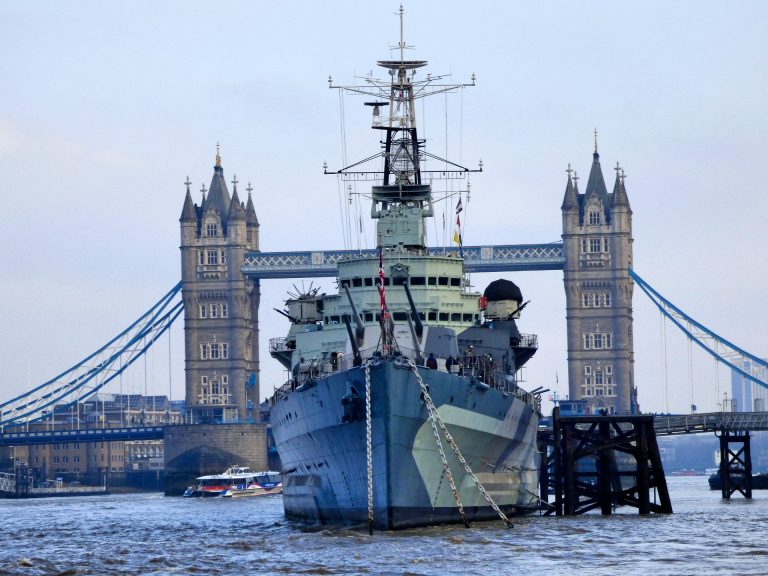The UK’s biggest warship HMS Queen Elizabeth and Carrier Strike Group are passing through the Singapore Strait. “It comes as the vessels head into the South China Sea having completed exercises with the Indian, Malaysian and Thai navies,” reported Forces News on July 26. On its way to Tokyo Japan, the warship is expected to pass through areas of the South China Sea that China claims it owns. However, the British government has not stated whether the route is within the 12-mile limit of such territories, which could be seen as a challenge to Beijing’s claims in the region.
During a recent visit to Tokyo, British Defense Secretary Ben Wallace confirmed that the warship and its escort fleet will enter international waters claimed by China in August. In his interview with The Daily Mail, the minister said that Britain has a “duty” to safeguard freedom of navigation.
“It’s no secret that China shadows and challenges ships transiting international waters on very legitimate routes… We will respect China and we hope that China respects us … we will sail where international law allows,” Wallace said.
China has built artificial islands in the South China Sea and used these islands to expand its territorial claims. However, a vast portion of these waters is not part of Chinese territory. Other countries like Vietnam, Malaysia, the Philippines, etc. claim rights over it, which Beijing dismisses as unworthy. If HMS Queen Elizabeth wishes to send a strong message to the communist regime in the mainland, it would have to pass through within 12 miles of the territories of the artificial islands.
This would be a clear signal that London does not see the artificial islands and the surrounding areas as Chinese territory. The 12-mile limit is critical since it delineates sovereign borders according to international law. If the British warship keeps away from the 12-mile limit, it would be an indication of London choosing to play it safe, and not antagonizing China.
Success
You are now signed up for our newsletter
Success
Check your email to complete sign up
Under the Donald Trump administration, the U.S. Navy’s freedom of navigation operations included sending ships within 12 miles of Beijing’s artificial territories. This policy is being continued under Biden. Though Japan, Australia, and France have conducted military exercises in the South China Sea, they were not carried out within the 12-mile limit.
Britain’s Royal Navy had recently deployed HMS Defender within 12 miles off the Crimean port, a region under Russian control since 2014. Whether London would be as adventurous with China as with Russia is something left to be seen.
UK opinions
Some in the UK have opposed the decision to send HMS Queen Elizabeth through South China Sea waters. Stop The War Coalition alleges that the move is “a deliberate attempt to provoke China” that will “undoubtedly lead to escalation of tensions” between the two nations.
On the other hand, in an interview with The Telegraph in April, former conservative leader Sir Ian Duncan Smith (IDS) said that the Boris Johnson government and Royal Navy need to “rethink this journey.” He made the comments amidst reports that HMS Queen Elizabeth would not sail through the Taiwan Strait while on its trip to Japan.
“I’m pleased the Aircraft Carrier is deploying in the South China Sea but they need to complete this process by letting the Chinese know that they disapprove of their very aggressive actions against their neighbors by sailing through the Taiwan Strait. I hope they will revisit their schedule, and ensure that this happens.” Smith stated.
Robert Clark, a defense fellow at the Henry Jackson Society, stated that the British should follow the precedent set by the French Navy two years back when they had sailed through the international waters of the Taiwan Strait. “This would be in keeping with US and British maritime policy of recognizing the freedom of international waters,” he stated.
Permanent warships
Meanwhile, the UK has announced that it will be permanently deploying two warships in Asia later this year. Some Chinese experts fear that the deployment would aid in expanding the influence of the Five Eyes (FVEY) intelligence alliance in Asia. The alliance comprises nations like the United States, United Kingdom, Canada, New Zealand, and Australia.
According to Li Jie, a naval expert from Beijing, the two ships might create political pressure on China via international public opinion.
“Britain is one of the five powers in the United Nations Security Council, so it means two Security Council members are joining to counter a rising China, and it may cripple Beijing’s political influence in the international community,” Li said to South China Morning Post. The other four permanent UN Security Council members include China, France, United States, and Russia.
In an interview with Global Times, Song Zhongping, a Chinese military expert and TV commentator, stated that the UK’s announcement of deploying two warships is an indication that it wanted to show off its presence in the Asia-Pacific while also participating in an America-led joint fleet in the region.
Though the warships themselves might pose some threat to Beijing, Song feels that it is the political influence of HMS Queen Elizabeth’s tour that is a bigger threat since it might influence other nations like Canada and Australia to follow with similar voyages in the South China Sea.














